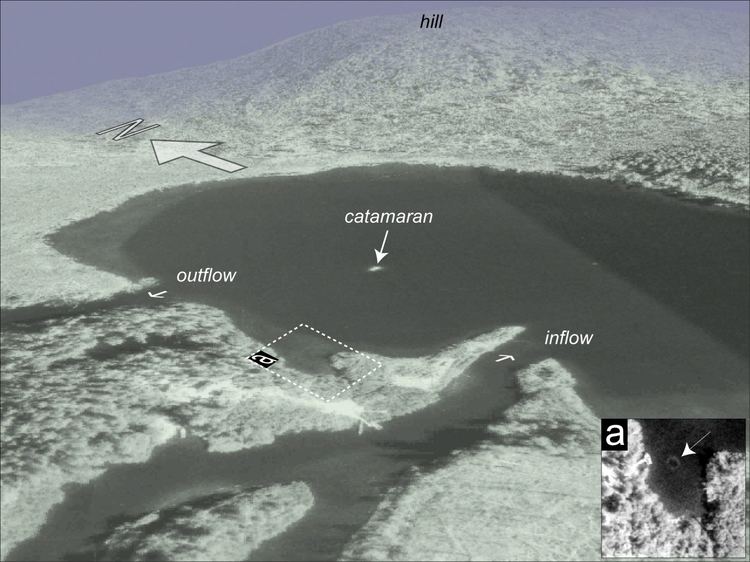Basin countries Russia | ||
 | ||
Location near Podkamennaya Tunguska River, Siberia | ||
Lake Cheko (Russian: Чеко) is a small freshwater lake in Siberia, near the Podkamennaya Tunguska River, in what is now the Evenkiysky District of the Krasnoyarsk Krai. It is a small bowl-shaped lake, 708 metres long, 364 metres wide and about 50 metres deep (2,323 by 1,194 by 164 feet).
Contents
Map of Lake Cheko, Krasnoyarsk Krai, Russia, 648490
It has been connected by some scientists to the Tunguska event and they postulate the lake was created by a chunk of the exploding meteorite that struck the ground. In 2017, that theory was disputed by Russian scientists, by proving that the lake is older, possibly even much older, than the Tunguska Event.
Age of the lake
Some scientists have speculated that Lake Cheko was created during the Tunguska event of 1908, an explosion that destroyed more than 2,000 km2 (800 sq mi) of Siberian taiga. It is suggested that the lake, which lies approximately 8 kilometres north-north-west of the event hypocenter, was formed by a fragment which struck the ground. More recent evidence suggests at least a portion of the lake is over twice as old as the date of the meteorite.
Varied evidence
A 1961 investigation estimated the age of the lake to be at least 5000 years, based on meters-thick silt deposits on the lake bed. However, a 2001 paper concluded that the sediments, isotopes, and pollen "suggest that Lake Cheko formed at the time of the Tunguska Event." Their recent research indicates that only a metre or so of the sediment layer on the lake bed is "normal lacustrine sedimentation", indicating a much younger lake of about 100 years.
Acoustic-echo soundings of the lake floor offer some further support for the impact hypothesis, revealing a conical shape for the lake bed, which could be consistent with an impact crater. Also, the lake's long axis points to the hypocenter of the Tunguska explosion, about 7.0 km away. Magnetic readings also indicate a possible meter-sized chunk of rock below the lake's deepest point, which may be a fragment of the colliding body.
In 2008, a BBC News story on the 100th anniversary of the Tunguska Event mentioned that researchers at Imperial College London had pointed out that many of the trees surrounding the lake are older than 100 years, which suggests that the lake could not have been created by an impact in 1908. The researchers also pointed out other problems, including the morphology of the lake and the surrounding terrain, the lack of impactor debris and ejecta, and that the characteristics of the impactor required by the impact theory are inconsistent with existing models of the known features of the event.
But in 2009, researchers from the University of Bologna investigated the lake bed and, based on evidence such as sedimentation, reaffirmed the conclusions of the 2001 paper that Lake Cheko formed at the time of the Tunguska Event.
Additional research by Russian scientists in 2017 appears to contradict a purely Tunguska Event based formation theory. Core samples of sediment taken from the deepest part of the lake demonstrated an age of up to 280 years, suggesting that at least a portion of the lake existed prior to the meteorite striking.
